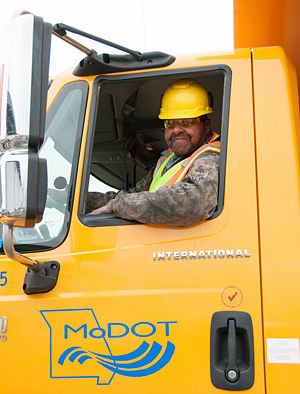Category:240 Maintenance and Emergency Crossovers
Maintenance and emergency crossovers may be constructed on freeways and expressways so that maintenance, emergency and law enforcement vehicles can avoid extremely adverse distances. These crossovers
- facilitate maintenance activities such as snow removal and
- provide ample access for law enforcement or emergency medical services responding to roadway incidents.
Maintenance crossovers may be needed at one or both ends of interchange facilities, depending on the type of interchange.
Public at-grade intersections or crossovers are not constructed on fully controlled access routes. Median openings are considered at intervals outlined in EPG 940.7 Median Opening Spacing on other routes.
The State Maintenance Director must approve the location of maintenance and emergency crossovers on all state maintained routes. An additional approval must be obtained from the Federal Highway Administration for maintenance and emergency crossovers on interstate highways.
Contents
240.1 Location
When selecting a location for a maintenance and emergency crossover, the guidance contained in AASHTO’s A Policy on Geometric Design of Highways and Streets should be used in addition to the following general guidelines:
1. Maintenance and emergency crossovers should not be located closer than 1,500 ft. to the end of a speed-change ramp or to any structures such as bridge columns or guardrail located in the median.
2. Maintenance and emergency crossovers should be located only where the Design Entering Sight Distance is provided.
3. Maintenance and emergency crossovers should not be located within curves requiring superelevation.
4. Spacing of crossovers should be every 2.5 miles, and
5. Interchanges that are closer than 2.5 miles apart should not have maintenance and emergency crossovers unless a defined need exists for maintenance, emergency, medical or law enforcement purposes.
Existing crossover locations should be evaluated for conformance with these guidelines. Opportunities to consolidate or eliminate crossovers that exceed these recommended locations should be considered for inclusion as a part of other construction projects along the route.
Changes to the location of crossovers (addition or elimination) should be coordinated with local law enforcement and emergency service providers in the affected area.
240.2 Request for Crossover Changes
The following information is required when submitting a request to construct a new or eliminate an existing maintenance and emergency crossover on an existing route:
1. The request can submitted in the form of a letter to the State Maintenance Director stating the route, county and exact station number of the proposed crossover change. The request should contain a general statement regarding the need for the crossover change. Requests for new crossovers shall address the sight distance in both directions of the proposed crossover and the effect on the median drainage. All change requests should include a statement to indicate that the crossover changes are acceptable to the local law enforcement and emergency service providers. A brief summary of the efforts to coordinate with these groups should also be included.
2. A general county highway map showing the location of the proposed crossover and all existing crossovers and interchanges within 5 miles on either side of the proposed crossover.
3. A copy of the plan-profile sheet for the section of roadway where the proposed crossover will be located.
4. For maintenance and emergency crossovers on interstate highways, the State Maintenance Director shall consult with FHWA and obtain their approval of the requested changes.
240.3 Maintenance and Emergency Crossover Construction Requirements
An unauthorized U-turn into high-speed traffic, on the part of the general public, represents a hazardous situation. In order to discourage non-emergency use of the crossover by motorists at large, the crossovers should be kept narrow with small transition radii. Neither should they have hard surfaces or deceleration tapers.
The design for emergency crossovers should be in accordance with Standard Plan 606.41. The surface should be 6 in. aggregate of predominately larger material to provide an adequate, all-weather surface that still appears unattractive to the non-emergency motorist.
1. Crossovers shall be constructed with an aggregate surface 20 ft. wide and with turning radii of 10 feet.
2. To be inconspicuous to mainline traffic, the surface should be depressed below shoulder level.
3. Sideslopes should be constructed 1V:10H or flatter to minimize their effect as obstacles to uncontrolled vehicles that may enter the median.
4. If possible, the crossover should be located where a pipe is not necessary. All drainage structures constructed in the median must be built to current safety standards. Refer to Standard Plan 606.41 for drainage piping plans and pipe end treatment options.
5. The surface shall not be upgraded to a higher type surface.
6. Crossovers are to be in good repair at all times.
7. Signing for a maintenance and emergency crossover shall be in accordance with EPG 903.5.39 AUTHORIZED AND EMERGENCY VEHICLES ONLY.
240.4 Guard Cable Termination at Emergency Crossovers
The design for guard cable termination as well as the grading for the crossover should be in accordance with Standard Plan 606.41. The width of the crossover should be 20 feet. If feasible, the crossover should be located immediately downstream of an existing median drop inlet in order to eliminate a pipe culvert.
Existing crossover locations should be evaluated for conformance with the guidelines in EPG 240.1.
